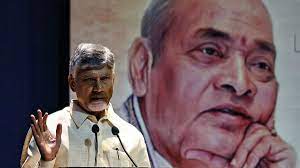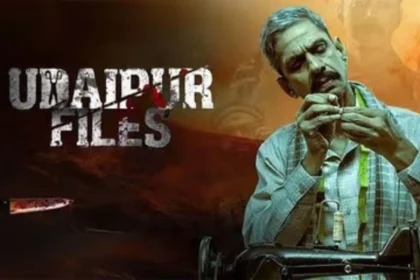Chandrababu Naidu’s Alliance with Modi Reflects the Ideological Flexibility Once Seen in Narasimha Rao
New Delhi: On July 15, a peculiar séance was underway at the Prime Minister’s Museum and Library at Teen Murti Bhavan. The official purpose was to reflect on the “Life and Legacy of P.V. Narasimha Rao,” the accidental prime minister, the architect of liberalisation, and – according to the whispers in the corridors of Indian politics – the “first Bharatiya Janata Party prime minister.”
The medium chosen for this communion was N. Chandrababu Naidu, the chief minister of Andhra Pradesh, himself a politician whose career is a testament to ideological elasticity.
As Naidu spoke, it became clear that the tribute was not exactly Rao’s. The lecture was a bait-and-switch, a political ritual not of remembrance, but of fealty. In a performance of strategic sycophancy, Naidu used Rao’s memory to offer praise to a usual figure: Narendra Modi.
This performance revealed far more about Naidu’s own precarious position in the National Democratic Alliance (NDA) coalition and the ideological shifts reshaping India than it did about the man he was ostensibly there to honour.
The evening’s partisan flavour was set from the outset. The host, Nripendra Misra, a veteran bureaucrat who served as principal secretary to Narendra Modi, listed the subjects of previous lectures. For the non-Congress prime ministers, there was a reverential “Shri.” For the others, a stark mention: “Jawaharlal Nehru, Indira Gandhi and Lal Bahadur Shastri.” This was likely no slip but a signal from a Modi-era power broker that a reordering of reverence is fast taking place in the very institution meant to preserve the nation’s history.
Naidu took the stage and began with a perfunctory nod to Rao as a “great statesman” before pivoting to his true subject. “I have seen everything over the last five decades in politics,” Naidu declared, moving on to framing the last 10 years under Modi as the singular apex of India’s journey. With surgical precision, he excised the decade of UPA rule under Manmohan Singh – the very finance minister who was the other and indispensable half of the Rao-Singh reform duo. In Naidu’s retelling, Indian history had a 10-year black hole between Vajpayee and Modi.
Naidu peddled the much-debunked claim that the World Bank had ranked India as the “fourth most income-equal country globally.” This claim, born of a misread government press release, serves as a crucial myth for a leader whose own “Super Six” welfare promises in Andhra Pradesh remain largely unfulfilled in his first year in power.
The convenient amnesia of history
Naidu choosing Rao as the vessel for his adulation of Modi was ironical.
Naidu’s entire political existence is a direct consequence of the Kamma community’s historical antagonism towards the Congress government that Rao once led in Andhra Pradesh. Rao’s tenure as chief minister in the early 1970s, with his government’s land ceilings act and restrictive ‘mulki’ rules, created considerable alienation among the powerful Kamma caste. This disenchantment directly fuelled the meteoric rise of the Telugu Desam Party (TDP), founded by Naidu’s father-in-law, N.T. Rama Rao.
Naidu built his political empire on the foundations of Kamma disaffection with the Congress, a disaffection ignited by policies under Rao.
As Naidu stood and recast Rao as an uncomplicated hero, more glaring was his omission of the sordid realities of Rao’s own ascent to power. In his searing 1991 essay ‘Meham in Nandyal,’ the late civil liberties icon K. Balagopal documented the brutal “gangsterism” and “warlord” tactics that secured Rao’s unopposed election, writing of abducted opposition candidates and intimidation sanctioned from the highest echelons of Congress. Naidu’s hagiography naturally sought to bury this version.
The saffron price tag
Naidu’s performance aligned seamlessly with the Hindutva project of the NDA masters. Mentioning that Rao was fluent in 17 languages, he could not resist a pointed jibe: “Now we are all talking, why should we learn Hindi?”. Many will consider this a direct betrayal of the Dravidian political consensus Naidu once claimed to champion.
This capitulation became a grotesque family affair this week. First, his deputy, Pawan Kalyan, called Hindi the tongue of “peddamma” (mother’s elder sister). Then, Naidu’s son and heir-apparent, Nara Lokesh, while speaking to a national news channel, incorrectly insisted “Hindi is our national language,” defiantly doubling down even when corrected.
This is, seemingly, the price of admission to the new NDA. After a vitriolic campaign against Modi before 2019 – which led BJP president Amit Shah to declare the doors to the NDA “permanently closed” for him – Naidu has completely surrendered. He now finds himself on a saffron tightrope, making ample space for a soft-Hindutva narrative – praising yoga, for example even in his speech – something that the BJP has masterfully weaponised as a tool of cultural normalisation.
Unable to fight Hindutva, Naidu is now actively helping to build its kingdom.
The neoliberal gospel of a ‘good cat’
Throughout his lecture, Naidu invoked the term “public policy” with the fervour of a televangelist. As Balagopal diagnosed decades ago, this is code for a specific ideology. Naidu’s “public policy” is the gospel of neoliberalism, which posits a state not as a provider but a “facilitator” for private capital. It’s why he speaks of social responsibilities and public-private partnerships, replacing the language of rights and social justice with the language of corporate-friendly “efficiency” and the “charity” of billionaires like Bill Gates.
The most revealing articulation of this philosophy was his proud mention of the “P4 model” – public-private-people’s partnership. This slogan is a masterstroke of hollow political branding. Even the standard P3 model is often criticised for outsourcing state responsibilities to private corporations, raising concerns about reduced public accountability and transparency.
By adding a fourth ‘P’ for ‘people’, the model takes on a cynical PR twist—framing the state’s retreat from its obligations as a form of democratic empowerment. It shifts responsibility onto an undefined “people” who lack both the institutional authority of the state and the financial clout of corporations. In reality, this inclusion is symbolic, rendering the public participants in name only. It enables the government to abdicate its duties while appearing more inclusive—a fitting slogan for a leader slow to implement his own administration’s welfare promises.
Rao’s famous appropriation of Deng Xiaoping’s quote, “It should not matter if a cat is black or white, if it catches a mouse… it is a good cat,” which Naidu also cited, finds expression in Naidu himself. For him, ideology is merely the colour of the cat; power is the mouse. Any cat that helps him catch the mouse is, for that moment, a good cat.
As the evening concluded, one was left with a profound sense of political vertigo. A lecture on a Congress prime minister, delivered by a regional leader whose party was born in opposition to him, had become a platform to deify a BJP prime minister, while simultaneously erasing the legacy of another Congress PM who was instrumental to the very reforms being discussed.
Balagopal wrote that Naidu was a man who did not just represent his times but actively latched onto them. Today, the times are defined by Modi’s hyper-centralised power and the BJP’s Hindutva expansionism. Naidu, the ultimate survivor, is once again latching on, hoping to ride the wave.








